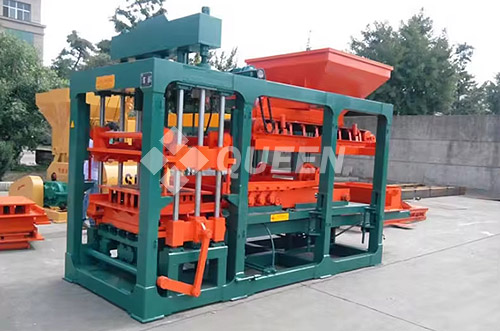The hollow block making machine is a specialized piece of equipment designed to produce hollow blocks used in construction and building projects. These machines operate through a series of stages that transform raw materials into durable, structurally sound hollow blocks. The following outlines the key components and processes involved in the working principle of a typical hollow block making machine.

1. Raw Material Preparation
The initial step involves gathering and preparing the raw materials required to create the concrete mixture. This generally includes:
- Cement: Acts as the binding agent.
- Aggregates: Usually sand and gravel, providing bulk and strength.
- Water: Essential for hydration and binding.
- Additives: Optional, used to enhance properties like strength or resistance.
These materials are measured accurately to ensure consistent quality.
2. Material Mixing
Once the raw materials are prepared, they are fed into a mixing system. This system may consist of a drum mixer or a more complex batching plant setup. The objective is to achieve a uniform mixture that has the correct consistency for molding. The concrete mixture should neither be too dry nor too wet to ensure proper compaction and curing.
3. Molding and Compaction
The mixed concrete is then transferred to the molding section, where it is poured into a specific mold designed to create hollow blocks with the desired dimensions and hollow cavities. Once the mixture is in the mold, the machine uses hydraulic or mechanical pressure to compact and shape the blocks. The compaction process is crucial, as it determines the strength and durability of the finished blocks.
4. Demolding
After the blocks have been properly compacted, they are ready to be removed from the mold. This step, known as demolding, involves releasing the blocks without causing damage. The hollow block making machine often uses hydraulic systems to carefully lift and remove the mold, allowing the blocks to be transported to the next stage without deforming or cracking.
5. Curing and Drying
The demolded hollow blocks are placed in a designated area for curing and drying. Proper curing is essential for achieving maximum strength and durability. This process can take several days to weeks, depending on environmental conditions and specific curing techniques used. During this time, the blocks harden and gain the required structural integrity.
6. Control Systems
Modern hollow block making machines often incorporate advanced control systems to monitor and manage the entire production process. These systems ensure consistent quality, adjust pressure and mixing levels as needed, and automate various tasks to increase efficiency.
